By Rose Young, Landscape Designer
 |

First Impressions May Need a Second Look
Years ago, when I saw the property I now own, it was difficult to find anything desirable about it. It had overgrown shrubs, vines and debris all over. Yet, as I looked beyond the mess, I recognized the key elements that made the lay of the land perfect. I knew with a minimum landscape investment I could add significant value to the property because I had done this before. Due to the property’s condition, the seller knew he had a limited opportunity. He took my offer after some haggling.
If you are buying, selling, or just re-evaluating your family home, the following are 'Key Elements' that will help you enhance a property and make it more valuable:
Upon Arrival
When you arrive, the property ideally, should
 feel welcoming. Is the entrance framed with trees, shrubs, a fence, or stonework? This framing helps create the entrance, the invitation to your home.
feel welcoming. Is the entrance framed with trees, shrubs, a fence, or stonework? This framing helps create the entrance, the invitation to your home.Guest and Family Entrances Two elements always make the house and yard seem friendly, a bench near the front door, and a large decorative pot of flowers. Even if you hardly use the bench or the door, the welcoming feeling it creates is worth it.
Privacy
Notice if there are trees and shrubs, evergreens or wild hedgerows along the border of the property. These will shield you from the
 street and neighbors and give you a serene relaxed feeling when you are outdoors. Sometimes a fence is needed to create privacy. Add shrubs and flowers along the fence to create a soft edge to your yard. These elements of privacy add value to the property. In this photo, the evergreens in the background hide the neighbors and buffer the north winds.
street and neighbors and give you a serene relaxed feeling when you are outdoors. Sometimes a fence is needed to create privacy. Add shrubs and flowers along the fence to create a soft edge to your yard. These elements of privacy add value to the property. In this photo, the evergreens in the background hide the neighbors and buffer the north winds.The Compass and East Light
Purchase a simple compass so you can see how the sun, shade and wind will work with the lay of your land. (We will use it to make several points
 as we go along.) Start with the compass in hand and have the needle point north. Now take note of where the sun will rise on the east side of the land. In the house, the bedrooms and kitchen benefit from east light, if you like to rise early. Morning sunlight is warm and enjoyable at breakfast and can get your day off on the right foot.
as we go along.) Start with the compass in hand and have the needle point north. Now take note of where the sun will rise on the east side of the land. In the house, the bedrooms and kitchen benefit from east light, if you like to rise early. Morning sunlight is warm and enjoyable at breakfast and can get your day off on the right foot.Outdoors, the east side of the house is where you can place a table and chairs, to have breakfast and read the newspaper in warm weather.
These days, materials are readily available and fairly inexpensive, to create a small patio for yourself. I created the patio in the photo below by laying strong black plastic over the ground, then I had 1/4" -1/2" inch stone loaded into my pick-up truck (at a local gravel pit) which I single handedly unloaded. I finished off the patio with decorative, Home Depot, edging pavers. It is a 18'x20' foot patio and cost under $200, no kidding.

Family Needs Think of your family’s needs, including your pets when looking at the land with the house. Does it have a good flat area for outdoor living, for play or to grow a garden? If the yard does slope, is it a gentle one, and which direction does the slope face, north, south, east or west?

The North Side
In New England, a north facing slope is less desirable because of the lack of sunshine heating the land and cold winds that blow in from the north. Evergreens, hedgerows, fences, and dense woods help deflect the frigid north winds of winter from a home.
South and West Light
South light warms the house and yard when the sun is highest. In the summer south windows need shade from a sheer curtain, window blinds or
 a deciduous tree outside. This tree provides shade in the summer heat but is bare in the winter allowing that strong warm light into the house. The sun’s winter angle is low enough for it to stream into the south windows.
a deciduous tree outside. This tree provides shade in the summer heat but is bare in the winter allowing that strong warm light into the house. The sun’s winter angle is low enough for it to stream into the south windows.South and west facing windows help take the cold bite and lack of light out of winter while we wait for spring. They are great for daytime home office hours and offer a sunset view.
In summer, depending on the heat of the day, the south and west side of the house are great for outdoor barbecues in the evening and enjoying the sunset.
 Kitchen Gardens
Kitchen Gardens A kitchen garden of herbs and vegetables will benefit from a long day in the sun. Either the first half or second half of the day will do. A minimum of 4-6 hours south light is good, but 10 hours of overall sunlight on a kitchen garden is great.
 Shade
ShadeShade can make a big difference to the comfort of your home and yard. You can get a good idea of where shade will fall from trees and buildings with your compass. Point the compass north and follow the path of the sun from east to west. Imagine, if you can, the shade that will be cast from the trees and buildings by looking at their height. Notice if the trees are evergreens or have leaves (deciduous). This will give you a good idea of how much more light you will have in the winter after the leaves fall.
A shade tree in the middle of a lawn
 gives the eye a rest stop. This is also the perfect place to add a couple of chairs or a bench.
gives the eye a rest stop. This is also the perfect place to add a couple of chairs or a bench.Trees
Sometimes large trees can get in the way of your sunshine, thin out or limb up the tree branches. This can help without having to remove the tree and it costs far less. Another thing to be aware of is large trees drink lots of water so notice the lay of the land and the direction the grade runs. You want to be sure you don’t suddenly get a lot of water in the basement because you removed a tree that was acting like a sponge to your benefit. Also, please remember how long it took that tree to grow, maybe thirty years or more, you can’t replace the shade once it’s gone, so be sure to think before removal.
Overgrown Shrubs

If you have landscape beds or foundation plants around your home that have become overgrown don’t worry, first start by cutting them back and see how they look. All shrubs should be below the window ledge in height and in proportion to the house. Oversized shrubs make your home look smaller and not as cared for, so go ahead and give them a trim and if that doesn’t work than transplant or removal is best.
Special note: Moisture can get trapped along the house behind huge shrubs and then mold and rot is likely. A good rule of a thumb is to leave a maintenance path for painting, etc. behind shrubs planted near the house. Also make sure the ground pitches away from the house so moisture doesn’t get into the basement.
 Mowing is easy when you have undulating shapes to move along and paths that are the mower’s width. When planting beds have sharp inside corners reshape them by adding or removing lawn. This eliminates fussy angles that need more time and attention.
Mowing is easy when you have undulating shapes to move along and paths that are the mower’s width. When planting beds have sharp inside corners reshape them by adding or removing lawn. This eliminates fussy angles that need more time and attention.Sloping Yard and Foundation Plants If the land slopes and is too steep to mow than think about letting it be
 wild or using low shrubs to hold the bank. Depending on the lay of the land and steepness of the slope there is a wide selection of evergreen and flowering shrubs or fruiting shrubs and trees that you can choose. A garden center or landscape professional can advise you on what plants will work in your location based on sun exposure, soil and water needs. Many of the same shrubs can be used as foundation plants bordering the house and can be combined with perennials and annuals. If you have the means to construct a retaining wall then you can terrace your slope with sections of flat or gently sloped planting beds.
wild or using low shrubs to hold the bank. Depending on the lay of the land and steepness of the slope there is a wide selection of evergreen and flowering shrubs or fruiting shrubs and trees that you can choose. A garden center or landscape professional can advise you on what plants will work in your location based on sun exposure, soil and water needs. Many of the same shrubs can be used as foundation plants bordering the house and can be combined with perennials and annuals. If you have the means to construct a retaining wall then you can terrace your slope with sections of flat or gently sloped planting beds. The View From Indoors
The View From IndoorsWhen you are inside the house, notice the view of your yard from different windows. A restful view will help you enjoy your house more. If it doesn’t happen naturally than see what you can do to create a better view. Clip away overgrown areas, add simple pathways that extend the yard, place a garden element or sculpture for viewing. All of these will immensely improve the view from the house. Also take advantage of the windows that face the sunset.

Your Niche in Nature By investing some sweat equity (labor) and a minimum expense into any or all of the points above, you can create a cozy home feeling for you and your guests. An example of this is my previous home which I owned for 15 years. Over time by putting my own labor and approximately $4,000 into the landscape proved to be very rewarding. When I sold it the Realtor informed me, that the landscape work alone, had increased the value of the property an additional $75,000. She was right, I got the asking price and the property sold quickly.
Every yard has projects to whittle away at, and with a little doing, you can tackle overgrown shrubs, brambles, trees, poison ivy, and debris. It is all in the selection of a good lay of land and what you do with it. Then you will have made a wise investment, and have a happy balance with your niche in nature.~~~~~~~~~~~~~~~~~~~~~~~~~~~~~~~~~~~~~~~~~~~~~~~~~~~
Rose Young, is a former landscape designer and operated her business in Connecticut and Massachusetts for nearly 20 years. Reinventing herself she now writes mystery novels sharing her knowledge of plants and her inspirations from the natural world.
Rose Young, is a former landscape designer and operated her business in Connecticut and Massachusetts for nearly 20 years. Reinventing herself she now writes mystery novels sharing her knowledge of plants and her inspirations from the natural world.
To learn more about connecting with nature visit her home page
All photos on this site are by Rose Young.
All photos on this site are by Rose Young.


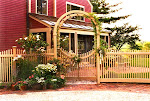
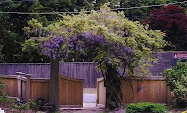

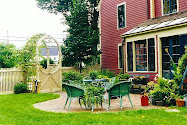
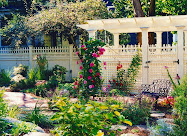
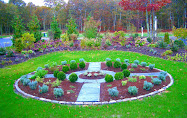





.jpg)

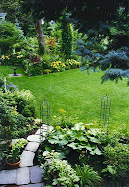
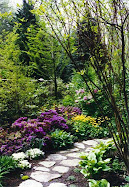
A truly helpful and informative article! Gorgeous pictures really show off the possibilities. Thanks Rose!
ReplyDelete